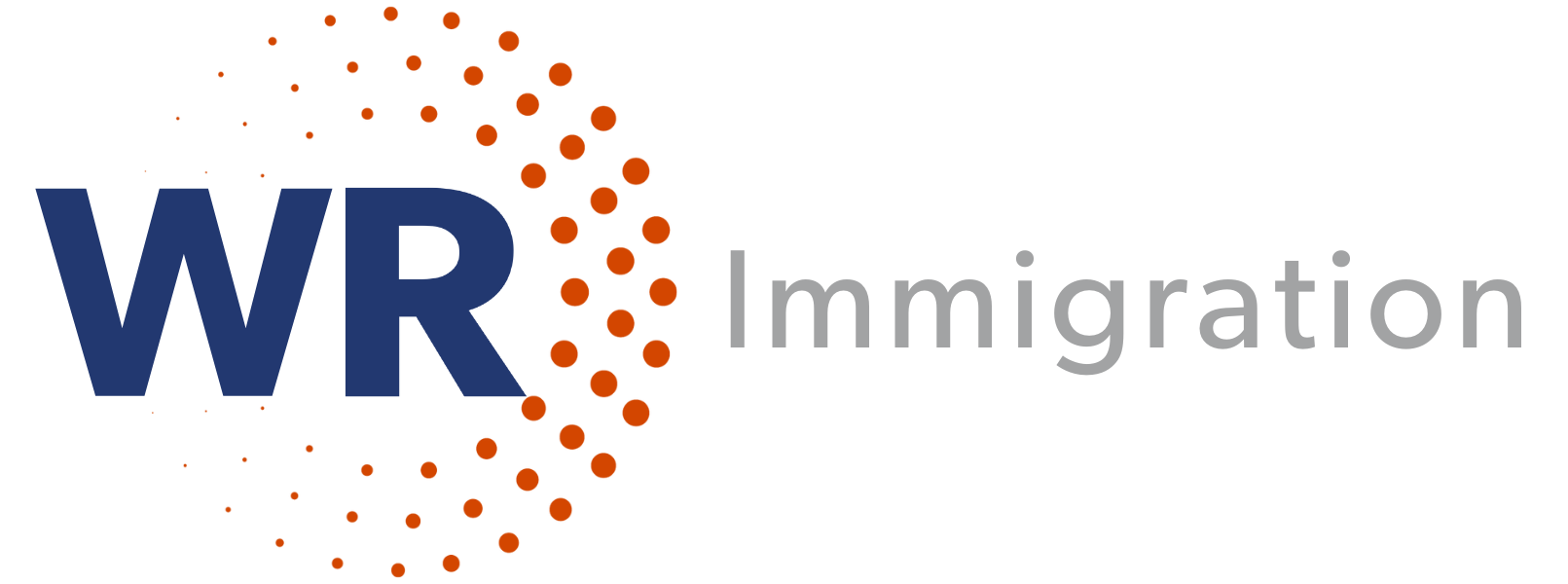There is a lot to unpack in this edition! Find out below about the DHS announcing fully vaccinated travelers from Canada and Mexico being allowed to enter the United States at land borders and ferry crossings, an update on the November 2021 Visa Bulletin relating to India and China EB-3 dates, Senate Democrats reviewing options for immigration provisions in an Reconciliation Bill, and more.
DHS Announces Fully Vaccinated Travelers From Canada and Mexico Will Be Allowed to Enter United States at Land Borders and Ferry Crossings
Secretary Alejandro N. Mayorkas announced on October 12, 2021, that the Department of Homeland Security will amend Title 19 regulations to allow nonessential travelers who have been fully vaccinated for COVID-19 and have appropriate documentation to enter the United States via land and ferry ports of entry (POEs) across U.S. borders.
The modifications will occur in two phases over the next few months:
The target date for lifting the travel restrictions is Nov. 8, 2021. People entering the United States at the borders with Mexico or Canada will be questioned by U.S. Customs and Border Protection officers about their vaccination status before being allowed to cross. The officers will have discretion to send travelers to secondary screenings for their documents to be checked, officials said. The administration will have limited exemptions for unvaccinated travelers from Mexico and Canada, including some children.
Details:
- A Proclamation on Advancing the Safe Resumption of Global Travel During the COVID-19 Pandemic, October 25, 2021, https://www.whitehouse.gov/briefing-room/presidential-actions/2021/10/25/a-proclamation-on-advancing-the-safe-resumption-of-global-travel-during-the-covid-19-pandemic/
- DHS Press Release, Oct. 12, 2021, https://www.dhs.gov/news/2021/10/12/secretary-mayorkas-allow-fully-vaccinated-travelers-canada-and-mexico-enter-us-land
- “The U.S. Will Reopen Its Land Borders for Fully Vaccinated Travelers,” New York Times, Oct. 12, 2021 (updated Oct. 14, 2021), https://www.nytimes.com/2021/10/12/us/politics/us-canada-mexico-borders-open.html
India and China EB-3 Dates Retrogress in November 2021 Visa Bulletin
The Department of State’s (DOS) Visa Bulletin for November 2021 is causing consternation and raising queries from beneficiaries trapped in backlogs. For example, the employment-based third preference immigrant visa category for India and China final action dates retrogressed substantially.
DOS said the retrogressions were “a direct result of extraordinarily heavy applicant demand for [visa] numbers,” primarily by U.S. Citizenship and Immigration Services offices for adjustment of status cases.
Details:
- Visa Bulletin for November 2021, Dept. of State, https://travel.state.gov/content/travel/en/legal/visa-law0/visa-bulletin/2022/visa-bulletin-for-november-2021.html
Senate Democrats Review Options for Immigration Provisions in Reconciliation Bill
According to news reports, Senate Democrats are considering various options for including scaled-down immigration provisions in a budget reconciliation bill following rejection by the Senate parliamentarian, Elizabeth MacDonough, of proposals for more sweeping changes. Under consideration is providing parole to immigrants who arrived in the United States before January 1, 2011, but do not have permanent legal status. The idea would be to allow them to stay in the United States, work legally, and remain with their families.
The House of Representatives’ Judiciary Committee passed immigration provisions in September that would be included in a reconciliation bill. Among those were several sections that the Senate parliamentarian has not yet considered, such as recapturing unused family and employment-based immigrant visas.
Details:
- “Immigrants and Green Cards: Immigration in a Reconciliation Bill,” Forbes, Oct. 12, 2021, https://www.forbes.com/sites/stuartanderson/2021/10/12/immigrants-and-green-cards-immigration-in-a-reconciliation-bill/?sh=735cae7678a3
USCIS Reaches H-2B Cap for First Half of FY 2022
U.S. Citizenship and Immigration Services (USCIS) announced on October 12, 2021, that it received enough petitions to reach the congressionally mandated cap on H-2B visas for temporary nonagricultural workers for the first half of fiscal year 2022.
September 30, 2021, was the final receipt date for new cap-subject H-2B worker petitions requesting an employment start date before April 1, 2022. USCIS said it will reject new cap-subject H-2B petitions received after September 30 that request an employment start date before April 1, 2022.
USCIS continues to accept H-2B petitions that are exempt from the congressionally mandated cap, including petitions for:
Details:
- USCIS alert, Oct. 12, 2021, https://www.uscis.gov/newsroom/alerts/uscis-reaches-h-2b-cap-for-first-half-of-fy-2022
DHS Secretary Mayorkas Announces New Immigration Enforcement Priorities
Secretary of Homeland Security Alejandro Mayorkas announced new guidelines for immigration enforcement priorities that focus on national security, public safety, and border security, and emphasize prosecutorial discretion. The new guidelines take effect November 29, 2021.
“For the first time, our guidelines will, in the pursuit of public safety, require an assessment of the individual and take into account the totality of the facts and circumstances” to ensure resources are focused most effectively on those who pose a threat, Secretary Mayorkas said. DHS also noted that most of the more than 11 million undocumented or otherwise removable noncitizens in the United States “have been contributing members of our communities across the country for years. The fact an individual is a removable noncitizen will not alone be the basis of an enforcement action against them.”
Continuous training, a process to review the guidelines’ effective implementation, extensive data collection, and a case review process will all be required, DHS said. Secretary Mayorkas is expected to issue additional immigration-related policy memos soon.
Details:
- DHS Press Release, Sept. 30, 2021, https://www.dhs.gov/news/2021/09/30/secretary-mayorkas-announces-new-immigration-enforcement-priorities
- “Guidelines for the Enforcement of Civil Immigration Law,” DHS, Sept. 30, 2021, https://www.ice.gov/doclib/news/guidelines-civilimmigrationlaw.pdf
DHS Ends Mass Worksite Enforcement Operations, Issues Policy Guidance
The Department of Homeland Security (DHS) issued a memorandum on October 12, 2021, updating its policies on worksite enforcement to focus on “unscrupulous employers who exploit the vulnerability of undocumented workers” and “create an unfair labor market.” The guidance memo states that DHS “no longer conduct[s] mass worksite operations,” sometimes called raids, that can result in the simultaneous arrests of hundreds of workers. DHS said that in addition to a lack of focus on exploitative employers, such operations misallocate resources and are inconsistent with DHS’s new guidelines requiring individualized assessments.
The guidance memo, among other things, directs DHS agencies to propose recommendations for protecting noncitizen victims and witnesses who report unlawful labor practices or participate in investigations or prosecutions.
Details:
- “Worksite Enforcement: The Strategy to Protect the American Labor Market, the Conditions of the American Worksite, and the Dignity of the Individual,” DHS Policy Statement 065-06, Oct. 12, 2021, https://www.dhs.gov/sites/default/files/publications/memo_from_secretary_mayorkas_on_worksite_enforcement.pdf
- “Biden Administration Orders Halt to ICE Raids at Worksites,” Washington Post, Oct. 12, 2021, https://www.washingtonpost.com/national/biden-administration-halts-ice-raids/2021/10/12/631dc86e-2b70-11ec-92bd-d2ffe8570c7d_story.html
CIS Ombudsman Releases Tips on Communicating With USCIS Contact Center
The Office of the Citizenship and Immigration Services (CIS) Ombudsman released tips on making communications with the U.S. Citizenship and Immigration Services (USCIS) Contact Center more effective, in response to recent changes in Contact Center processes. The CIS Ombudsman explained that the changes were made “to reduce reliance on telephonic live assistance while promoting the use of online self-help tools and digital inquiry channels” as a result of “financial limitations and resource constraints.”
Tips include when to reach out to the USCIS Contact Center; where to check case status; when to use online tools; how to submit case inquiries and service requests; what constitutes an emergency; how to expedite a case; how biometrics appointments are scheduled; how to reschedule appointments and interviews; and other advice.
Details:
- “How to Make Your Communication With the USCIS Contact Center More Effective,” Office of the Citizenship and Immigration Services Ombudsman, Dept. of Homeland Security, Sept. 2021, https://www.dhs.gov/sites/default/files/publications/uscis_contact_center_tip_sheet_final.pdf


